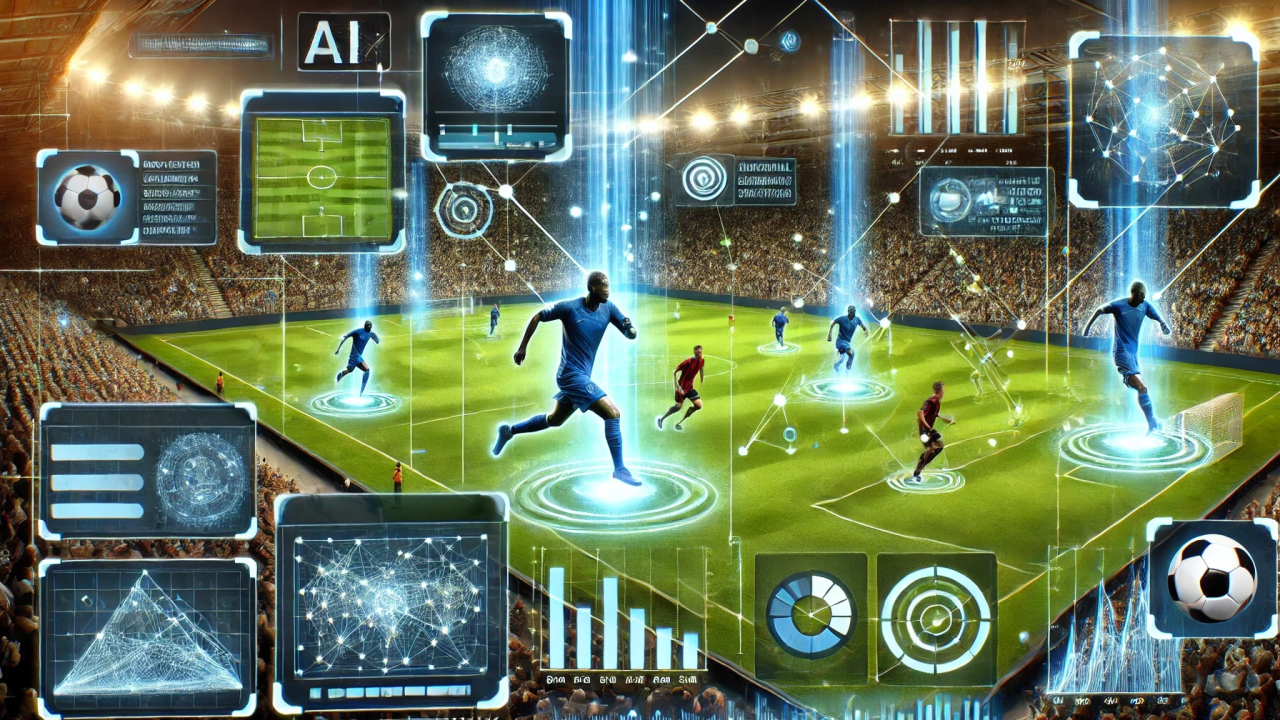Advanced Player Tracking and Analysis using AI and Computer Vision
Physics
A technology that uses AI and computer vision to track and analyze player movements, providing coaches and analysts with detailed insights on player performance, team strategy, and game dynamics.
The technology utilizes a synergistic combination of artificial intelligence (AI) and computer vision to meticulously track and analyze player movements during games and training sessions. This is achieved through the deployment of high-resolution cameras and sensors that capture a wide array of data points, including player positions, velocities, accelerations, and distances covered. The AI algorithms, specifically deep learning models such as convolutional neural networks (CNNs) and recurrent neural networks (RNNs), process this data to accurately identify and classify player actions, team formations, and game events.The computer vision component employs object detection algorithms, such as YOLO (You Only Look Once) and SSD (Single Shot Detector), to detect and track players, referees, and the ball in real-time. This information is then fed into the AI engine, which applies advanced analytics to generate insights on player performance, including metrics such as sprint distance, top speed, and distance covered. Additionally, the technology provides coaches and analysts with data on team strategy, including formation analysis, pressing intensity, and passing networks.The insights generated by the technology are presented through an intuitive and interactive dashboard, allowing coaches and analysts to easily visualize and explore the data. This enables them to identify trends, patterns, and areas for improvement, and make data-driven decisions to optimize player development, team strategy, and game planning. The technology also integrates with existing video analysis tools, allowing for seamless synchronization of video footage with the tracked data, further enhancing the analysis and review process.The technology has various applications across different sports, including football, basketball, and tennis. Its capabilities include real-time tracking, post-game analysis, and player monitoring. The technology can also be used to detect and prevent injuries by monitoring player fatigue and providing early warnings for potential injury risks. Overall, the technology has the potential to revolutionize the sports industry by providing coaches, analysts, and players with unprecedented levels of insight and understanding, enabling them to gain a competitive edge and improve performance.
Professional sports teams can utilize this technology to gain a competitive edge by analyzing player movements and game strategies, allowing them to make data-driven decisions and optimize their team's performance.
Sports analytics companies can leverage this technology to provide in-depth analysis and insights to teams, leagues, and media outlets, enabling them to better understand game dynamics and player performance.
Coaches and trainers can use this technology to identify areas for improvement in player technique, track player progress over time, and develop personalized training programs to enhance player development.
Sports media and broadcasting companies can integrate this technology into their game coverage, providing viewers with real-time statistics and analysis, and enhancing the overall fan experience.
Esports teams and players can utilize this technology to analyze their gameplay, identify areas for improvement, and develop strategies to outmaneuver their opponents.
Sports equipment manufacturers can use this technology to analyze player movements and develop more effective and efficient equipment, such as golf clubs or tennis rackets, that are tailored to a player's specific needs.
Rehabilitation and physical therapy centers can use this technology to analyze patient movements and develop personalized treatment plans to aid in injury recovery and prevention.
Gaming and simulation companies can integrate this technology into their products, allowing users to experience immersive and realistic simulations that mimic real-world sports and movements.
Academic and research institutions can use this technology to study human movement and behavior, gaining a deeper understanding of the complexities of human motion and developing new theories and models.

World Health Organization (WHO)
Artificial intelligence
View Patent
